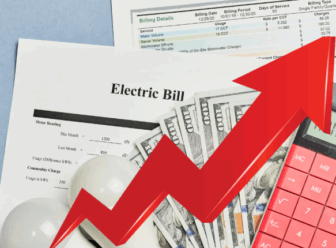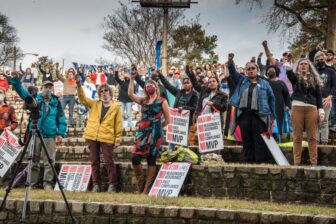The following post was written by my dad, Paul Douglass, who is on vacation in Coronado, a town in Southern California…
The wildfires that sweep through Southern California this week, blackening over 400,000 acres and displacing a half a million residents from their homes, may be cited correctly as evidence of global warming, all right. But the well-organized response to the disaster by local authorities, firefighters, volunteers, and ordinary citizens in San Diego County may signal that people here have crossed a milestone in their thinking about climate change.
San Diegans remember the Cedar Fire that devastated the county only three years ago. San Diegans know that more fire-related disasters are sure to be coming their way living in this arid corner of the country because they know what climate change is likely to mean for them. The increasingly frequent wildfires in recent years seemed to have taught San Diegans to be prepared when the next fires hit.
They were prepared this time. Fortunately for my wife and me, we were staying at a house on the beach in Coronado, a quiet village located on the narrow finger of sand that forms San Diego Harbor, when the fires raged in the hills to the east. Watching the local TV stations’ non-stop coverage of efforts by firefighters and air tankers to stave off the advancing walls of fire burning everything in its path only a few miles away was surreal.
Comparisons of the response to the wildfires with Katrina by the media were inevitable. By all accounts San Diegans did a superlative job of dealing with the thousands of evacuees, saving homes, providing supplies to those in need, even arranging live entertainment for the kids at the county’s central relief station, Qualcom Stadium, home of the San Diego Chargers.
The fires started last weekend in several mountain locations and by Monday the air over Coronado was noticeably heavy with particulate matter and white flecks of ash blanketed parked cars as the Santa Ana winds carried massive plumes of smoke westward out to sea. Soon, local authorities announced classes at all area schools would be canceled for at least a week due to dangerously poor air quality. Special programs were provided so that people could learn the fate of their homes from the fire. Damages from the fires have already topped $1 billion.
San Diegans responded to this disaster with extraordinary efficiency, public spirit and calm. There has been no reported looting or mayhem. It felt like a “snow day” in the East. Life here goes on. You see lots of Hummers and muscle cars on the roads.
Recent history has shown that San Diegans can expect many more wildfires like this as climate change is discussed and debated. Meanwhile, local authorities here have found better ways to deal with each emergency because the wildfires are occurring more than ever before.
Is it too much to imagine that after San Diegans sustain more and more of these firestorms they reach a point where they say it’s time to take much bolder collective action to prevent these natural disasters from happening to themselves in the first place?





